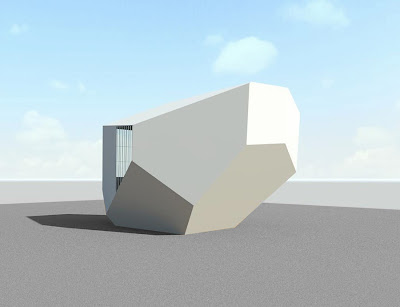Daylight is the important environmental design factor closely related to building energy use. Most architects learned about solar position and corresponding windows design in school. However, they haven’t used much since even though many 3D modeling software as well as Revit offers sun path and shadow renderings. Choosing appropriate type and size of shading device is difficult because sun is always moving and each location has different sun angles.
With Dynamo plugin in Revit, this parametric modeling project suggests recommended size automatically by BIM parameters. The depth and number of vertical shades are automatically generated to draw shadows on the window completely based on the value of the sun profile angle. With the 3D visual presentation of sun and relevant shading design, users intuitively can check the appropriate shading design in a different day and time of year set by users.
The author of the original horizontal fin sample is David Scheer.
http://autodesk.typepad.com/bpa/2013/08/more-fun-with-dynamo-for-bpa-automatic-shading-design.html
His dynamo project allows handling the horizontal shading device, which are the most common types in South orientation. The vertical shading device family for west facades is created and Dynamo visual programming calculates the recommended depth of the vertical fins.
The architecture building of this project has shading devices in both of south and west facades. The size of the windows opening is controlled in the dynamo slide bar and the length of the shading fin (both of the horizontal and vertical ones) will be automatically adjusted by the position of Sun. Therefore, when architecture designers decide type and details of shading devices, this project help to reduce time consuming from trial and errors of multiple shading design candidates.
If the user decide the Glazing height, glazing width values by number slider, other parameters are designed to be decided automatically in relation to the sun position angle. The sun path directions can be divided to x, y, and z. y, z, and the width of glazing are used to decide the width of the vertical shading fin. The formula is in below:
Width of the vertical shading fin = Glazing width * y / x
If the width of the shading fin is over 5 feet, dynamo will create another shading fin and cut the width of existing vertical shading fin in half.
If new shading fin is created, it will be placed the new shade at half window width.
If we move the sun position and click dynamo button, Dynamo automatically calculate the updated shading fins automatically.





.jpg)








